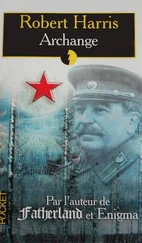It was in the autumn of 1972 that O’Donnell first heard the story of Sergeant Arndt’s ill-fated mission to fly the ten metal trunks out of Berlin. From Heinz Linge he had obtained the address of Rochus Misch, the bunker’s switchboard operator. Misch, by then in his fifties, turned out to be the proprietor of a paint and varnish shop less than a mile from O’Donnell’s Berlin office. Misch was happy to talk about his wartime experiences. The interview began in his shop and continued during a walk through the city. From a vantage point in Potsdamer Platz the two men stood for a while, looking out across the Eastern sector, to the grassy mound in the shadow of the Berlin Wall which is all that now remains of Hitler’s bunker. It was not until the early evening, when they were sitting in O’Donnell’s office, that Misch mentioned the loading of the chests on to the lorry and described Arndt’s departure from Berlin.
In my office [recalled O’Donnell] I had for years been using my own US Army officer’s standard-issue footlocker to store back-copies of the overseas editions of Time and Newsweek . Misch spotted this, and in order to describe the German chests pointed to the footlocker: ‘Something like that, only cheaper, and with wooden ribs.’ To get the heft and thus a guess at the weight, Misch and I together were just able to lift it three feet into the air to simulate the 1945 loading operation.
Using this as a rough guide, O’Donnell estimated that Arndt had been escorting almost half a ton of documents. He decided to pursue the story further and a few months later drove down to the Bavarian village of Herrsching, on the shores of Lake Ammersee, to see Hans Baur.
Baur had tried to break out from the Führerbunker two days after Hitler’s death but had been cut down by Russian machine-gun fire. He was hit in the leg and the wound had turned septic. ‘There was no surgeon available,’ Baur wrote later, ‘so the German surgeon amputated with a pocket knife.’ O’Donnell found a tough and irascible old man of seventy-seven, who used his wooden leg as if it were an elaborate stage prop, noisily tapping it with his signet ring or occasionally hobbling round the room on it to enact some dramatic scene. In November 1945 he had been taken by cattle truck to Moscow’s Lubianka prison where, night after night for weeks on end, he had been interrogated about Hitler’s final hours. He was made to put his account down on paper, only to have the pages snatched off him and torn up before his eyes. Sometimes he was grilled on his own; sometimes the Russians dragged in other bunker survivors: the commander of Hitler’s SS bodyguard, Hans Rattenhuber, his naval attaché, Admiral Voss, Otto Guensche and Heinz Lingé. The questioning went on for three and a half years. In 1950 he was asked if he had ever flown Hitler to meet Mussolini. Baur answered that he had, four times. He was promptly accused of ‘having taken part in war preparations, because during those discussions Hitler and Mussolini had hatched their criminal plot to attack the Soviet Union’. Despite Baur’s horrified protests that he ‘bore no more responsibility than a train driver’, he was sentenced to twenty-five years in a labour camp. In the end, he spent ten years in Soviet captivity. He was released in 1955 and shortly afterwards he decided to write his memoirs. They were not designed to be a work of scholarship or history, but – as he told Trevor-Roper soon after his return to the West – a book to be read ‘by the fire, in the evening, with pipe in mouth’. It was in this book, Hitler’s Pilot, buried amid the anecdotes of his adventures with the Boss, that Baur had first described Hitler’s reaction to the news that Arndt’s plane was missing.
The original manuscript had contained ten pages on Operation Seraglio, but his publishers had cut them – as they cut more than two-thirds of his rambling reminiscences. Baur told O’Donnell that he had been anxious to set matters straight because of accusations from the relatives of some of those killed that the operation had been poorly planned. He had contacted the Luftwaffe’s Graves Registration organization who told him – erroneously as it turned out – that the aircraft had crashed in a Bavarian forest (it had in fact crashed in what is now East Germany). That was all he knew. He had no idea what Hitler had meant by ‘valuable documents’ for ‘posterity’.
O’Donnell considered what could possibly have been of such value to Hitler that its apparent loss could cause such distress.
From the autumn of 1942 onwards, a team of stenographers had taken down every word uttered during the military conferences at the Führer’s headquarters. These verbatim transcripts were compiled at Hitler’s insistence as a means of establishing his strategic genius and his generals’ incompetence: ‘I want to pin down responsibility for events once and for all,’ he explained to one of the stenographers. If there was one set of records which Hitler intended as ‘a testament to posterity’ it was this. He stated at the time that his words were to be ‘taken down for later historical research’.
One of Hitler’s secretaries, Christa Schroeder, told O’Donnell that in her view it was these transcripts that were on board the crashed plane. Else Krueger, Martin Bormann’s former secretary, agreed with her. She rejected O’Donnell’s initial theory that the papers might have been the missing notes of Hitler’s ‘Table Talk’ from 1943 to 1944: these were Bormann’s responsibility and would have been among his files, not Hitler’s.
At this point, in 1975, with the deadline for the completion of his book looming, O’Donnell decided he had taken the story as far as he could. He was content to have obtained a minor historical scoop: establishing for the first time a link between Baur’s account of Hitler’s reaction to the loss of Arndt’s plane, and Misch’s description of the evacuation of the ten heavy chests. To round off the story, and to cover all possible eventualities, he ended his account of the episode with what he hoped was an appropriately teasing last paragraph:
As all police reporters know, documents have a way of surviving crashes in which humans are cremated. While even metal melts, a book or a notebook does not burn easily, above all when it is packed tightly into a container excluding oxygen. Paper in bulk tends, rather, to char at the edges… One is left with the nagging thought that some Bavarian hayloft, chicken coop, or even pigsty may well have been waterproofed and insulated with millions of words of the Führer’s unpublished, ineffable utterances, simply hauled away at dawn as loot from a burning German transport plane.
O’Donnell’s book was published in Germany under the title Die Katacombe in 1976. Not long afterwards, General Mohnke, one of the book’s main characters, presented a copy to Gerd Heidemann.
O’DONNELL WAS AWARE of Stern ’s increasing interest in the survivors of Hitler’s court. ‘During the years when I was on the road talking to the “Mountain People”, and above all from 1975 on, Stern approached at least a dozen of the old Hitler retainers and encouraged them, in the words of Heinz Linge, “to get something, anything on paper”.’ Linge, who lived in Hamburg, recalled one occasion when he joined Wolff, Mohnke, Hanna Reitsch (the famous Nazi test pilot) and ‘several others’ aboard Carin II for a day trip to the North Sea island of Sylt. Linge described the yacht as ‘a kind of sentimental bait for all of us old Hitler people’. In the course of the two-hundred-mile voyage, Heidemann ‘between bouts of champagne and caviar’ tried to entice his guests to dictate their memories into his tape recorder. The results were disappointing: hardly surprising, observed Linge, ‘with so much champagne flowing’.
Читать дальше












